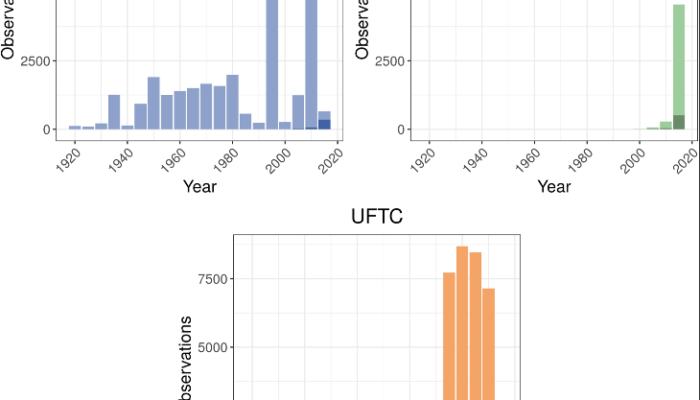Evaluating the data quality of iNaturalist termite records
Evaluating the data quality of iNaturalist termite records
Hartwig H. Hochmair , Rudolf H. Scheffrahn, Mathieu Basille, Matthew Boone
Abstract
Citizen science (CS) contributes to the knowledge about species distributions, which is a critical foundation in the studies of invasive species, biological conservation, and response to climatic change. In this study, we assessed the value of CS for termites worldwide. First, we compared the abundance and species diversity of geo-tagged termite records in iNaturalist to that of the University of Florida termite collection (UFTC) and the Global Biodiversity Information Facility (GBIF). Second, we quantified how the combination of these data sources affected the number of genera that satisfy data requirements for ecological niche modeling. Third, we assessed the taxonomic correctness of iNaturalist termite records in the Americas at the genus and family level through expert review based on photo identification. Results showed that iNaturalist records were less abundant than those in the UFTC and in GBIF, although they complemented the latter two in selected world regions. A combination of GBIF and the UFTC led to a significant increase in the number of termite genera satisfying the abundance criterion for niche modeling compared to either of those two sources alone, whereas adding iNaturalist observations as a third source only had a moderate effect on the number of termite genera satisfying that criterion. Although research grade observations in iNaturalist require a community-supported and agreed upon identification (ID) below the family taxonomic rank, our results indicated that iNaturalist data do not exhibit a higher taxonomic classification accuracy when they are designated research grade. This means that non-research grade observations can be used to more completely map the presence of termite locations in certain geographic locations without significantly jeopardizing data quality. We concluded that CS termite observation records can, to some extent, complement expert termite collections in terms of geographic coverage and species diversity. Based on recent data contribution patterns in CS data, the role of CS termite contributions is expected to grow significantly in the near future.
To read the full article, go to: https://journals.plos.org/plosone/article?id=10.1371/journal.pone.0226534.


